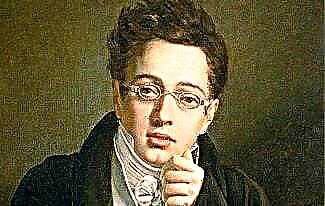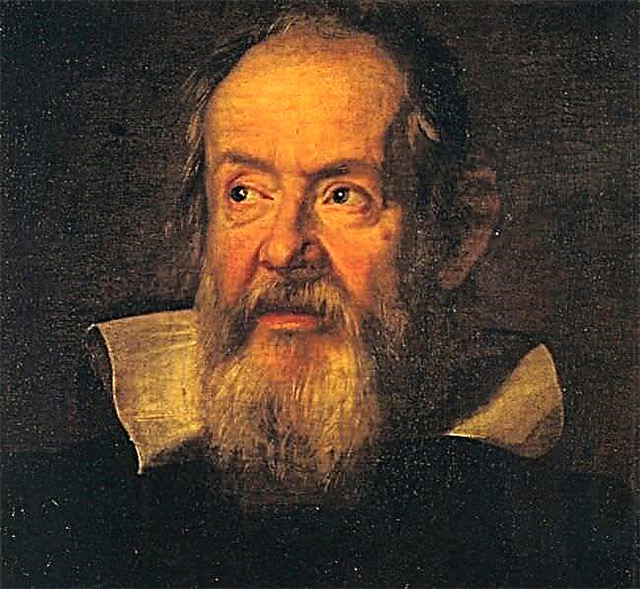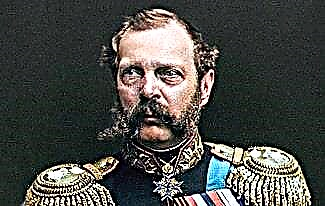Konstantin Sergeevich Stanislavsky (real name Alekseev; 1863-1938) - Russian theater director, actor, teacher, theorist, reformer and director of theaters. The founder of the famous acting system, which has been extremely popular all over the world for over a century. First People's Artist of the USSR (1936).
There are many interesting facts in the biography of Stanislavsky, which we will talk about in this article.
So, before you is a short biography of Konstantin Stanislavsky.

Biography of Stanislavsky
Konstantin Alekseev (Stanislavsky) was born on January 5 (17), 1863 in Moscow. He grew up in a large wealthy family.
His father, Sergei Alekseevich, was a wealthy industrialist. Mother, Elizaveta Vasilievna, was engaged in raising children. Konstantin had 9 brothers and sisters.
Childhood and youth
Stanislavsky's parents had a house near the Red Gate. An interesting fact is that none of his relatives, with the exception of one of the grandmothers, had anything to do with the theater.

Constantine's maternal grandmother, Marie Varley, has performed in the past as an actress on the Paris stage.
One of Stanislavsky's grandfathers was the owner of a gimp factory, and the other was a wealthy merchant. Over time, the family business ended up in the hands of Father Constantine.
Parents tried to give their children the best upbringing and education. Children were taught music, dance, foreign languages, fencing, and they also instilled a love of books.
The Alekseev family even had a home theater in which friends and close relatives performed. Later, in the Lyubimovka estate, the family built a theater wing, which was later named the "Alekseyevsky circle".
When Konstantin Stanislavsky was barely 4 years old, he first played in one of the family performances. And although the boy was a very weak child, he demonstrated excellent acting on stage.
Parents encouraged their son to participate in such productions, but in the future they saw him exclusively as the director of his father's weaving factory.
Having received his primary education, Konstantin became a student at the gymnasium at the Institute of Oriental Languages, where he studied during the period of his biography 1878-1881.
After graduation, Stanislavsky began working in the family company, and also actively participated in the "Alekseevsky Circle". He not only performed on stage, but also staged performances.
In addition, Konstantin took plastic and vocal lessons from the best teachers.
Despite his passionate love for the theater, Stanislavsky paid great attention to business. After becoming a factory director, he traveled overseas to gain experience and improve production development.
Moscow Art Theater and direction
In 1888, Stanislavsky, together with Komissarzhevsky and Sologub, founded the Moscow Society of Art and Literature, the charter of which he developed independently.
Over the course of 10 years of the society's activity, Konstantin Sergeevich has created many vivid and memorable characters, participating in the productions of "The Arrogant", "Dowry" and "The Fruits of Enlightenment".
Stanislavsky's acting talent was obvious to both ordinary viewers and theater critics.
Since 1891, Konstantin Stanislavsky, in addition to acting on stage, took up directing. At that time in his biography, he staged many performances, including Othello, Much Ado About Nothing, The Polish Jew, Twelfth Night and others.

In 1898 Stanislavsky met Nemirovich-Danchenko. For 18 hours, theatrical masters discussed the possibility of opening the Moscow Art Theater.
The debut cast of the famous Moscow Art Theater troupe consisted of students of the masters and listeners of the Moscow Philharmonic.
The first performance, staged in the newly formed theater, was Tsar Fyodor Ioannovich. However, The Seagull, based on the play by Anton Chekhov, became a real world sensation in the performing arts. An interesting fact is that later the silhouette of a seagull will become a symbol of the theater.
After that, Stanislavsky and his colleagues continued to cooperate with Chekhov. As a result, such performances as "Uncle Vanya", "Three Sisters" and "The Cherry Orchard" were staged on the stage.
Konstantin Stanislavsky devoted a lot of time to directing, educating actors, theoretical and practical development of his own system. According to Stanislavsky's system, any artist was obliged to fully get used to the role, and not just portray the life and feelings of his hero.

In 1912 at the Moscow Art Theater, the director began to teach students the art of acting. Six years later, he founded an opera studio at the Bolshoi Theater.
In the early 1920s, Konstantin Sergeevich with the artists of the Moscow Art Theater went on a tour to America. At the same time, he worked on the creation of his first work, "My Life in Art", in which he described his own system.
After the October Revolution of 1917, major changes took place in Russia. However, Stanislavsky continued to enjoy great respect among the representatives of the new leadership of the country.
It is curious that Joseph Stalin himself repeatedly visited the Moscow Art Theater, sitting in the same box with Stanislavsky.
Personal life
The wife of Konstantin Stanislavsky was the actress Maria Lilina. The couple lived together until the death of the great director.
Three children were born in this marriage. Daughter Xenia died of pneumonia in infancy. The second daughter, Kira Alekseeva, in the future became the head of her father's house-museum.

The third child, son Igor, was married to the granddaughter of Leo Tolstoy. It is worth noting that Stanislavsky also had an illegitimate son from a peasant girl Avdotya Kopylova.
The father of the master Sergey Alekseev, that is, his grandfather, was raising the boy. As a result, he received the surname and patronymic of his grandfather, becoming Vladimir Sergeevich Sergeev.
An interesting fact is that in the future Vladimir Sergeev will become a famous historian of antiquity, a professor at Moscow State University and a Stalin Prize Laureate.
Death
In 1928, at the anniversary evening of the Moscow Art Theater, Stanislavsky, who was playing on stage, had a heart attack. After that, the doctors forever forbade him to go to the stage.
In this regard, after a year, Konstantin Stanislavsky took up directing and teaching activities.
In 1938, the director published another book, The Work of an Actor on Himself, published after the death of the author.
For about 10 years, the man struggled with the disease and created despite the pain. Konstantin Sergeevich Stanislavsky died on August 7, 1938 in Moscow.
Today Stanislavsky's system is very popular all over the world. Many famous actors, including Hollywood stars, are trained in her acting skills.
Stanislavsky Photos


















